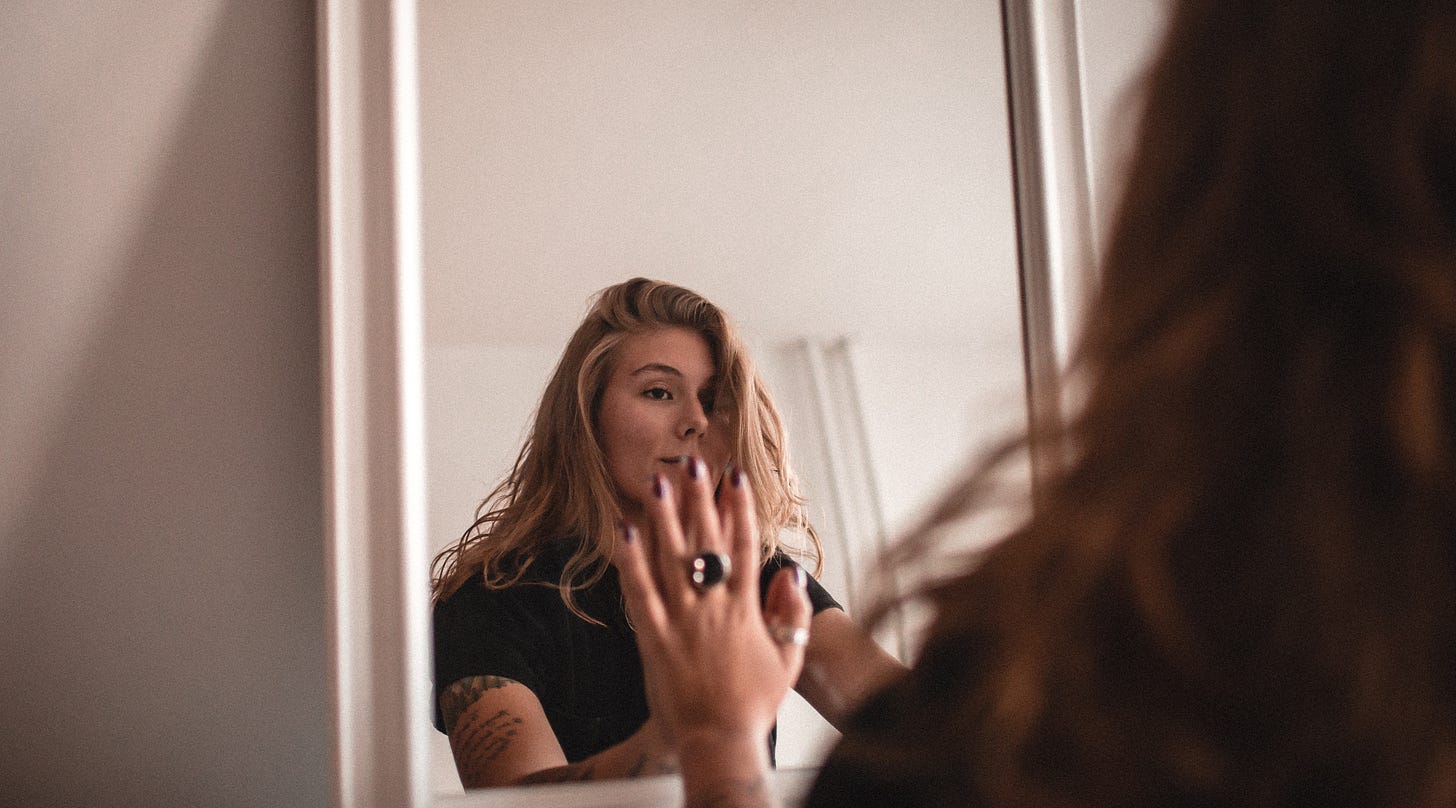012. The 6 core style types explained
Style informs identity, it does not create it.
Whether you call it an essence, a type, or a category, it’s all the same when it comes to self-identification through style: everyone subscribes to at least one.
And I reckon that most of you here subscribe to two, that — counterintuitive as it seems — are actually completely opposite form each other, yet still feel like a valid part of who you are.
One likely feels like your standard way of dressing, the creature comfort you faithfully repeat over and over again… And then there’s a whole other side of you that almost feels like an alter-ego — it’s the pieces you put on that are just far enough outside your dressing norm that they feel new, edgy, and fresh to you.
Am I onto something here?
This is the conversation I started a few weeks ago when I taught about defining style types vs style aesthetics and where to find yourself in the mix. This week, as promised, we’re going to break down the types into tangible definitions.
ID, please
As I’ve mentioned, when you Google “what are the core style types,” you will be confronted with seemingly infinite results.
And the deeper you get into searching specific style types, you will repeatedly notice the concept of “yin and yang” styles and the reference to every style as a “style essence.” Like this:
Because it’s important to me to draw my line in the sand, I must say that the origin and concept of the yin yang disagrees with my faith and so I do not endorse or follow this approach. I do, however, understand, and even agree with, the idea of having a “balanced” style and see it as very common to have two core style types present within one person.
What makes me wary — and is something I’ve wanted to articulate for a while — is this:
Style itself cannot be your identity, it can only be an identifier.
Contrary to what I see the internet boast, style isn’t an immovable “essence” you can trust in to satisfy your every need. It, like you, changes and grows over time and that’s not a bad thing.
Style informs identity, it does not create it.
The Identitree™
So here’s what I came up with instead:
Still in development, I have plans to expand this '“tree” into branches upon branches of style aesthetics that naturally fit into each type.
Why a tree? Because you are the root, not the style types.
A tree allows you the flexibility to channel any style type you like because each one is within you. It just comes down to personal choice where you choose to bloom.
Now that we have our core established, let’s get to the definitions1.
Dramatic, explained
I mean, it’s kind of in the name, right?
More intense than all other style types, a dramatic zeroes in on projecting a powerful and authoritative image through angular lines. Straight, structured and rigid, a dramatic appreciates anything that makes a statement — from flashy accessories, to rich, moody colours. When it comes to patterns, a dramatic will opt for big and bold, typically geometric in shape to coordinate with the stiffness of all the other lines going on.
This look is polished, professional, and unafraid to be the center of attention.
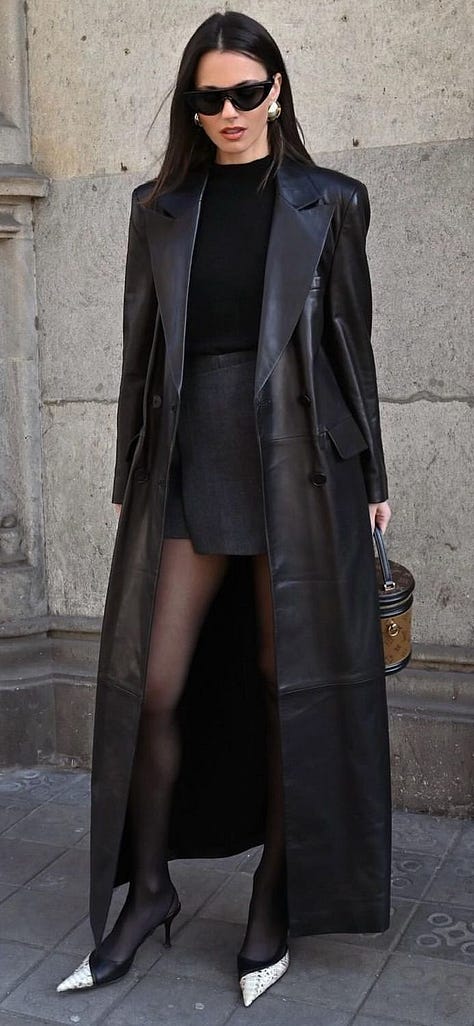
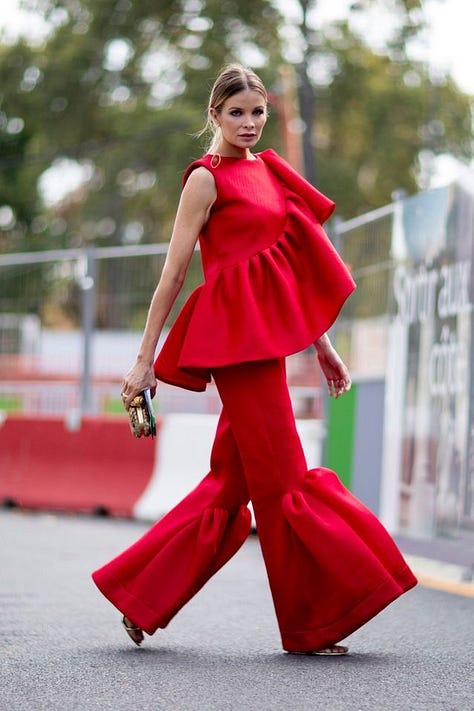

Gamine, explained
First of all, what the heck does Gamine even mean, right?
Popularly defined as “an archetype of a slim, often boyish, elegant young woman who is described as mischievous2…” we can understand Gamine as the rebellious style type that isn’t too concerned about following explicit style rules.
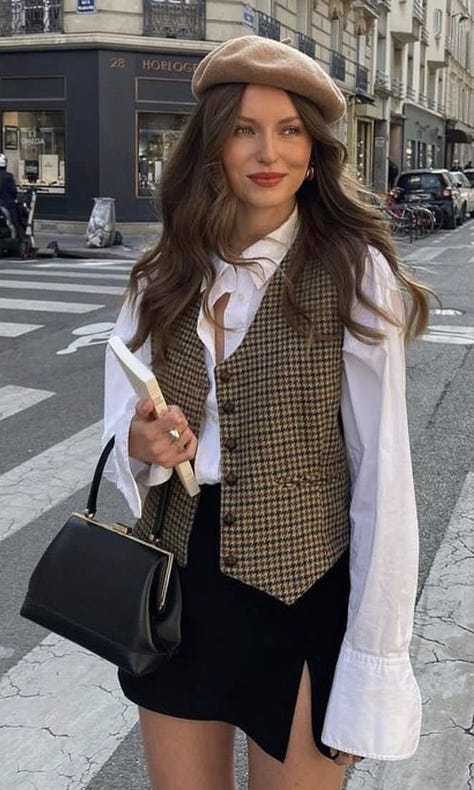
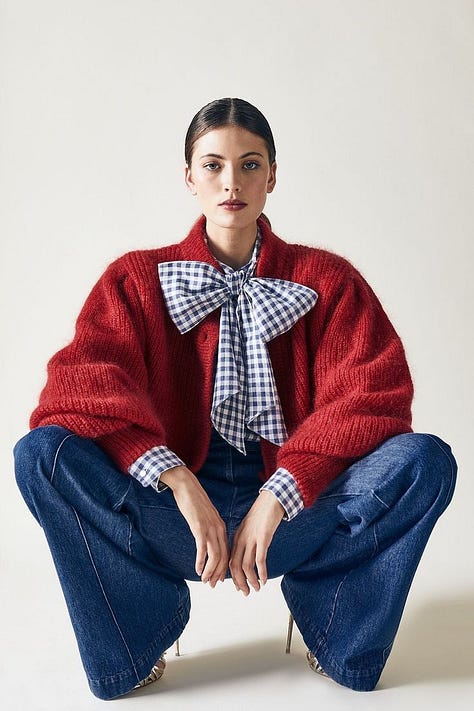
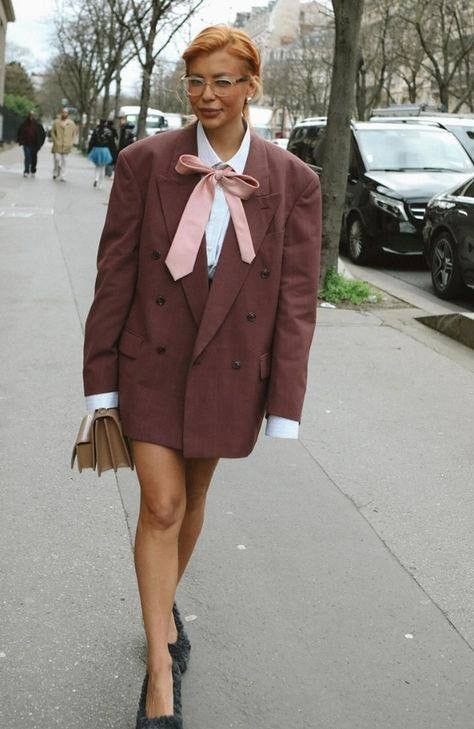
Appreciative of more compact garments that showcase square shapes (typically accentuating a shorter stature), Gamine will often be found in bold, contrasting colours and accessories used in unique and innovative ways. A Gamine likes to get creative with patterns and elaborate on the finer details, typically exuding an overall childlike energy.
If you described your style as “tomboy” growing up, you’re likely to find resonance with the Gamine style type.
Natural, explained
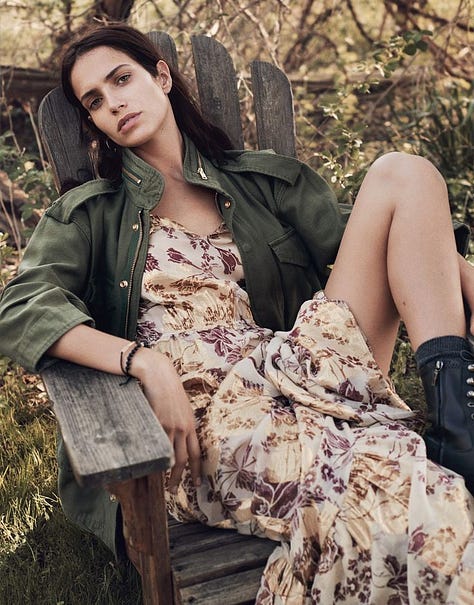
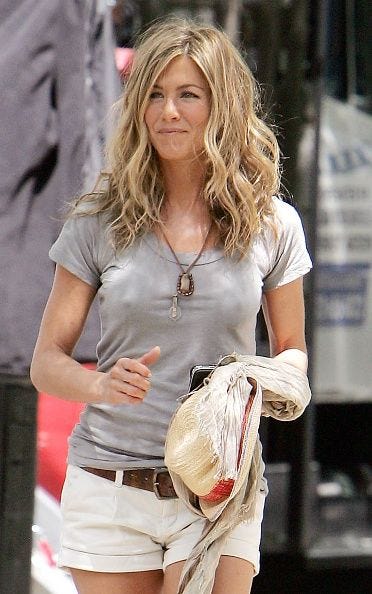
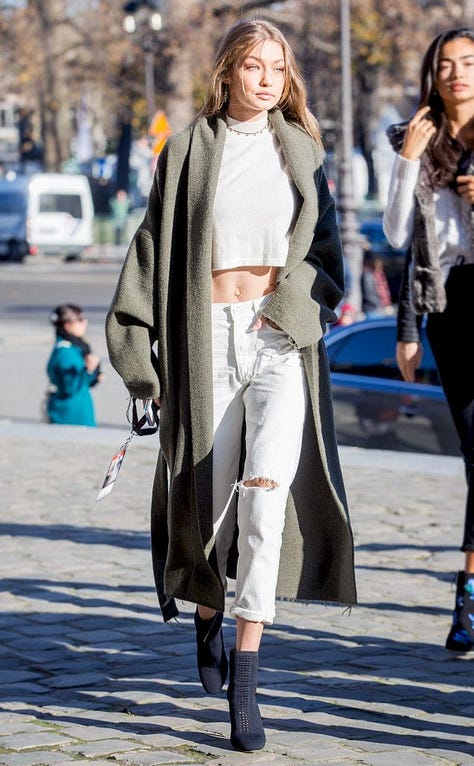
I’m relaxed just thinking about this style type.
Basically bohemian, Naturals gravitate towards comfort, meaning rough ‘n raw natural fabrics, an earthy colour palette, and botanical prints.
I see the primary goal of a Natural to have functionality and comfort in their wardrobe, with style coming in second. Depending on the look they’re going for, they can either appear more sporty and athletic (think Athleisure), or very ethereal and fairy-like (think Boho). A Natural appreciates unstructured shapes that are easy to move in and therefore have a relaxed fit, and because of their naturally smaller frame, layers work well rather than overwhelm them.
Classic, explained
Bouncing back to style aesthetics for a second, Classic could easily be defined as “clean girl aesthetic” according to Gen-Z.
It’s timeless and effortless. In a word: refined.
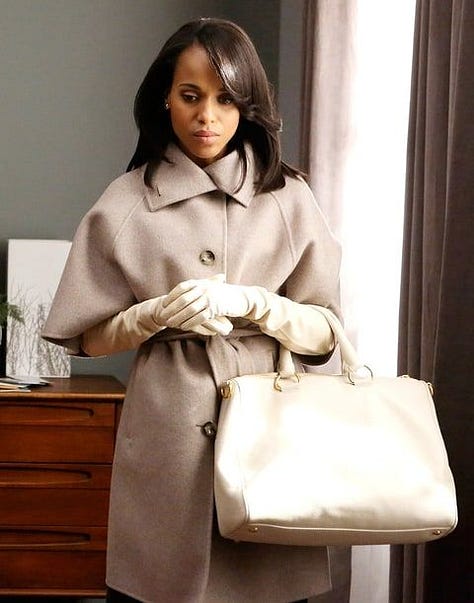
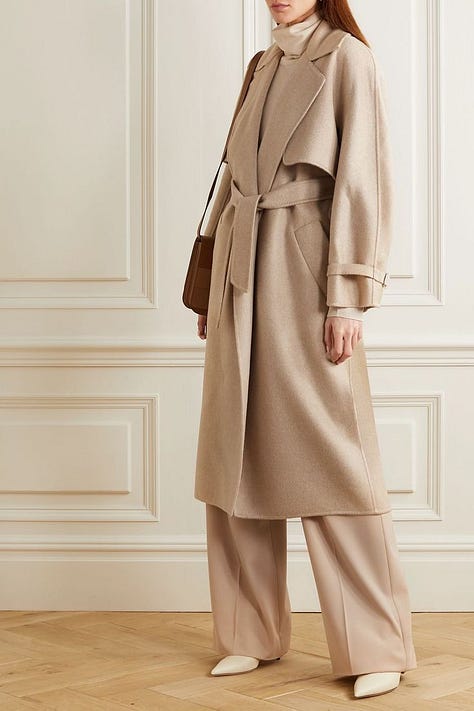
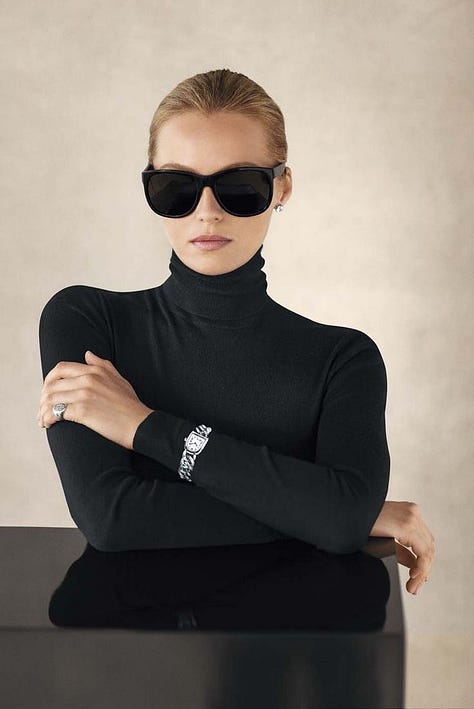
With a Classic, the style pattern is found in its simplicity — from neutral colours, to fine accessories, to timeless patterns (like houndstooth), to tailored cuts. It could be argued that Classics are the most sustainable style type because they never go out of style, but they’re also not necessarily adventurous in trying new styles either. Classics, in my mind, are very much a uniform style type but can get quite interesting when you start adding other style type elements to the mix. Showing off an overall chic elegance through top-quality fabrics and semi-fitted garments, Classics usually err on the modest side of the spectrum and appreciate minimal detail.
Romantic, explained
Turn up the heat on this one, folks, because the Romantic style type is all about ✨the allure✨.
Romantics are known for their expression of sensuality and mature femininity.
Just as a Dramatic can be predominantly defined by its angular lines, a Romantic is instantly recognizable for its curves. Romantics love anything ruched, draped or lacey and they love the glamour. Like a Natural, they appreciate movability, which is found in the flowing garments you’ll often see them sporting, donned in deep, sensuous colours. If they’re not wearing solids, you’ll see them in large, gorgeous floral prints, giving them an overall pretty-but-sexy look. Gravitating towards form-fitting cuts that exaggerate their natural curves, the flow of the drapes add to their flirtatiousness.



Ingénue, explained
Decorative and delicate, the Ingénue style type appreciates femininity in similar ways a Romantic does, but in a much more “innocent” and overtly girly way.
You’re likely to find an Ingénue in whimsical patterns that showcase small-scale prints, and cuts with details and trimmings that are meticulously attentive-to-detail. An Ingénue’s colour palette is recognizable for its light, airy and soft pastels (think Ariana Grande) coupled with vintage-leaning designs (think 60s Chanel). This style type is more compact in its overall dressing, opting for shorter garments (think crop tops) as opposed to long ones (think heavy overcoats).
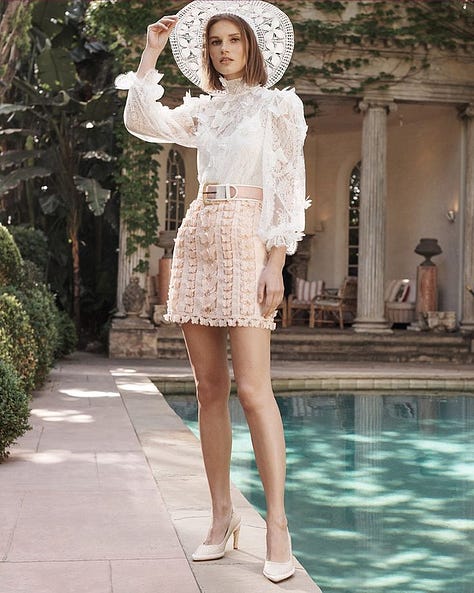
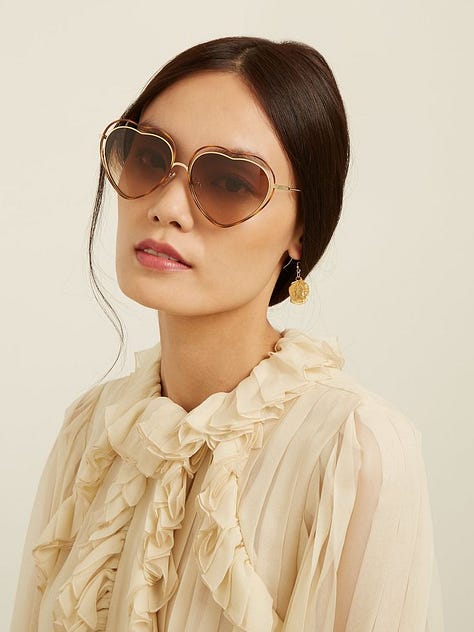

1,200 words later…
Whew, I feel like I just wrote a marathon.
I considered splitting this entry into a two-parter, but figured if I could lay the groundwork definitions down for every style type first, then I could more seamlessly elaborate on each either in its own blog, or freely between entries.
And like I said, The Identitree™ is still in the works, so stay tuned for its growth. It’s gonna be great.
💌, Tess
Every “See a full Pin board of examples” has been curated by The Concept Wardrobe. Another item to my To Do List: curate my own Pin Boards for each style type.
Thank you Wiki — https://en.wikipedia.org/wiki/Gamine



